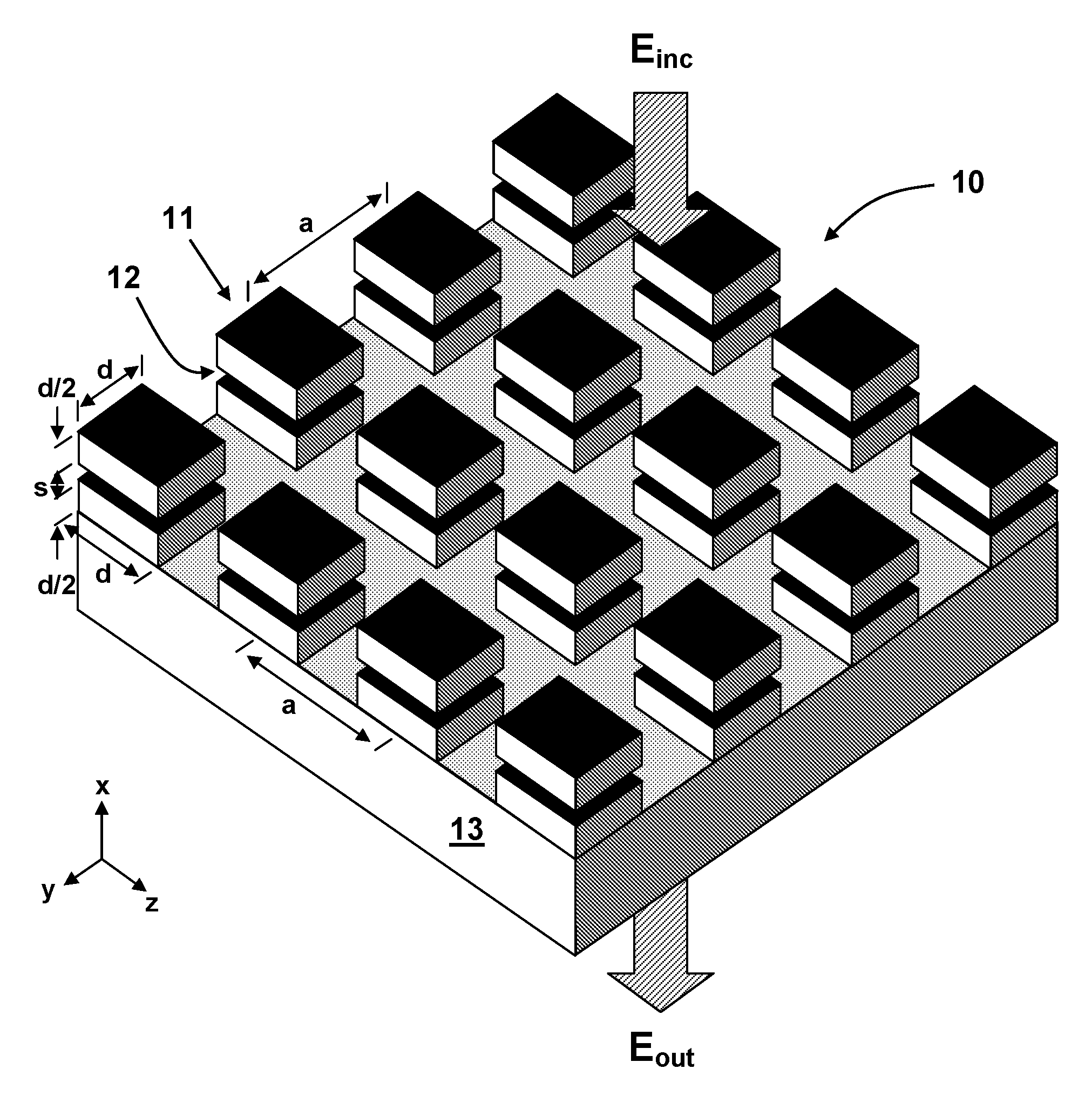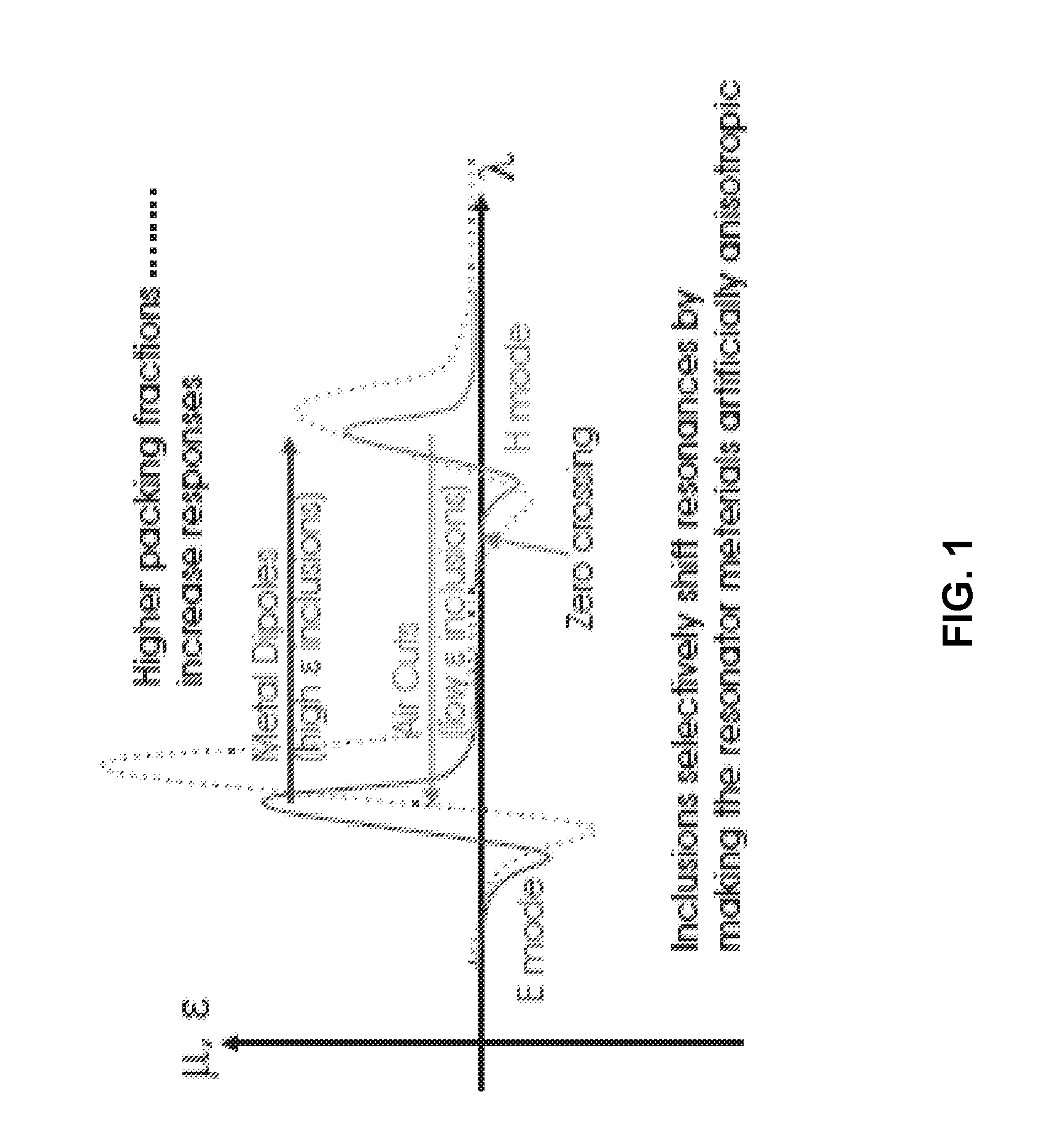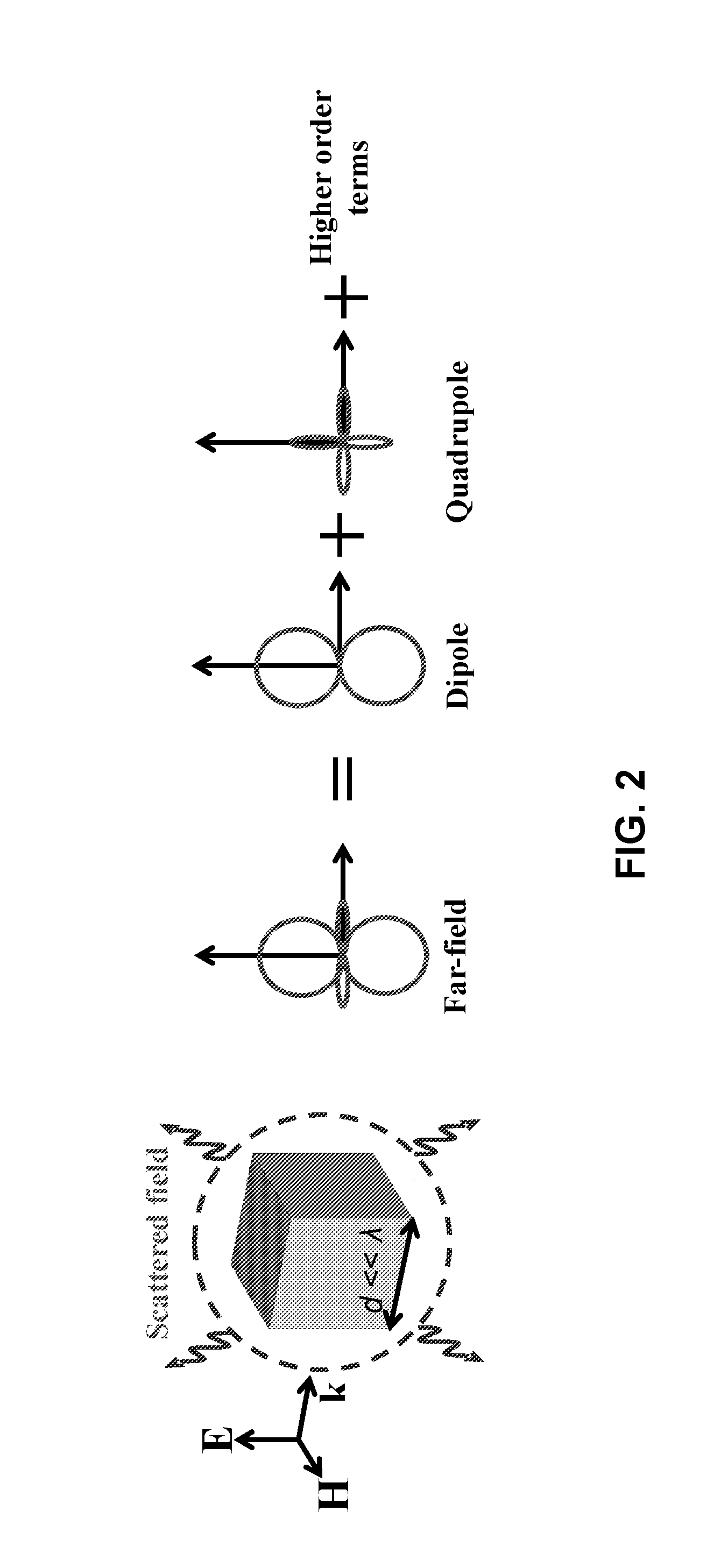Flat optics enabled by dielectric metamaterials
- Summary
- Abstract
- Description
- Claims
- Application Information
AI Technical Summary
Benefits of technology
Problems solved by technology
Method used
Image
Examples
Embodiment Construction
[0022]The invention makes use of geometries based on perturbation theory, previously introduced in Warne et al., as an alternative route to obtain resonators that exhibit dominant dipole resonances in certain frequency bands. See U.S. application Ser. No. 13 / 618,997 to Warne et al., filed Sep. 14, 2012, which is incorporated herein by reference. These perturbed resonators can be used to achieve local properties in metamaterials. Such perturbations of the resonator geometry provide additional degrees of freedom that allow the overlap of the electric and magnetic dipole resonances, enabling negative-index- or zero-index-like functionalities. Warne et al. uses cavity-perturbation techniques to determine the types of inclusions (in terms of material, polarization, and placement) that are necessary to realize degenerate dipole resonances, and provides simple formulas which can be used for the design of these types of resonators. The present invention uses such perturbed resonators for a ...
PUM
 Login to View More
Login to View More Abstract
Description
Claims
Application Information
 Login to View More
Login to View More - R&D
- Intellectual Property
- Life Sciences
- Materials
- Tech Scout
- Unparalleled Data Quality
- Higher Quality Content
- 60% Fewer Hallucinations
Browse by: Latest US Patents, China's latest patents, Technical Efficacy Thesaurus, Application Domain, Technology Topic, Popular Technical Reports.
© 2025 PatSnap. All rights reserved.Legal|Privacy policy|Modern Slavery Act Transparency Statement|Sitemap|About US| Contact US: help@patsnap.com



